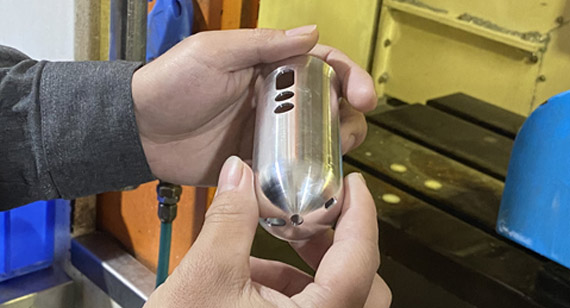15 years one-stop China custom CNC machining parts factory

Hey there I’m VMT Sam!
With 25 years of CNC machining experience we are committed to helping clients overcome 10000 complex part-processing challenges all to contribute to a better life through intelligent manufacturing. Contact us now
 173 |
Published by VMT at Dec 16 2023
173 |
Published by VMT at Dec 16 2023
In the process of CNC machining, aluminum is a common processing material, and its surface finish has a significant impact on product quality and performance. Selecting the appropriate surface finish is important for improving product quality, reducing production costs, and enhancing product competitiveness. This article will explore how to select the appropriate surface finish for CNC machining aluminum.

I. The influence of surface finish on CNC machining aluminum
Appearance quality: Surface smoothness directly affects the appearance quality of the product. A high-smoothness surface presents a smooth, shiny effect, while a low-smoothness surface presents a rough, dull effect.
Performance: Surface finish also has a significant impact on the performance of the product. A high-gloss surface can improve the wear resistance, corrosion resistance, and fatigue resistance of the product, while a low-gloss surface can lead to a decrease in product performance.
Production cost: Surface finish also has an impact on production cost. High-quality surfaces require more advanced processing equipment and higher processing costs, while low-quality surfaces can be achieved with simple processing equipment, reducing production costs.

II. Choose the appropriate surface finish method
Clear product requirements: When selecting the appropriate surface finish, it is important to first clarify the product requirements. Understanding the product's requirements in terms of appearance quality, performance, and production costs can help determine the appropriate range of surface finish.
Understand the CNC machining technology: Different processing technologies can lead to different surface finishes. When selecting the appropriate surface finish, it is important to understand the processing technology used and the range of surface finishes it can achieve.

Consider material factors: As a common CNC machining material, aluminum's physical and chemical properties have an impact on surface finish. For example, aluminum's hardness, toughness, melting point, and other physical properties, as well as its chemical reactions with other elements, can affect surface finish during processing.
Optimizing machining parameters: Machining parameters such as tool type, cutting speed, and feed rate have a significant impact on surface finish. Optimizing machining parameters can effectively improve surface finish.
Using auxiliary machining methods: In order to improve the surface finish, some auxiliary processing methods can be used, such as fine milling, grinding, and polishing. These methods can further improve the surface quality after processing.
Refer to industry standards: Depending on the industry and product type, you can refer to corresponding standards to choose the appropriate surface finish. These standards usually provide a range of recommended finish grades to suit different application scenarios.
Consider the economy: When choosing the appropriate surface finish, it is also necessary to consider economic factors. High-quality surfaces require more equipment and labor costs, so on the premise of meeting the performance and appearance quality requirements, it is necessary to choose a moderate surface finish to reduce production costs.
III. Case Study
Taking the numerical control processing of an aviation part as an example, the part is made of aluminum and requires high corrosion resistance and high fatigue life. To meet this requirement, a high surface finish is required. At the same time, considering the appearance quality and production cost of the part, the final surface finish selected is 6.3 microns (Ra).
IV. Summary
In the process of CNC machining aluminum, selecting the appropriate surface finish is of great significance for improving product quality, reducing production costs, and enhancing product competitiveness. It is necessary to identify product requirements, understand processing techniques, consider material factors, optimize processing parameters, adopt auxiliary processing methods, refer to industry standards, and consider economics to comprehensively determine the surface finish. In practical operations, the above methods can be flexibly applied according to specific product requirements and processing conditions to achieve the optimal surface finish effect.
Ready To Start Your Next Project?
Get Instant Quote

Request a Free Quote
Send us a message if you have any questions or request a quote. We will get back to you ASAP!